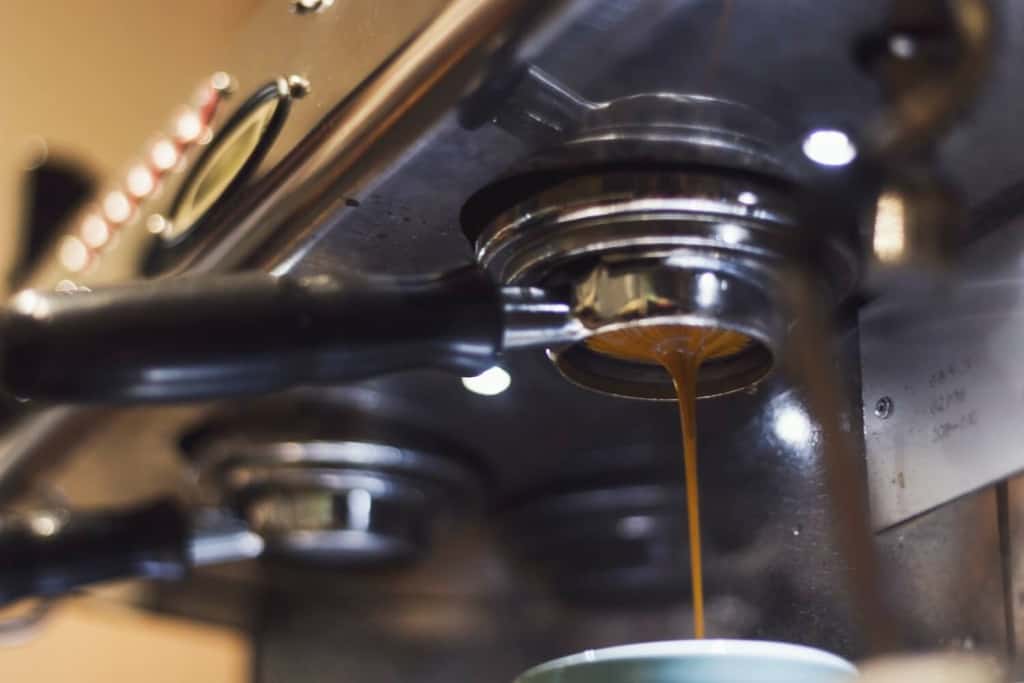As an Amazon Associate I earn from qualifying purchases.
The menus of most coffee shops will always include a host of espresso-based beverages. From latte to Americano, macchiato to cortado, we’re used to expecting the difference between these drinks to stem from how much hot water, steamed milk, or froth they each contain – if any. Their common unifier is always that full-bodied shot of espresso.
But now, all of a sudden, you hear about ristretto. How is a ristretto different from an espresso? In this case, the difference boils down to the process of coffee extraction. Let’s see what each of these beverages is, and how they’re made. In the end, it’s these factors that account for the final difference in flavor.
What’s an Espresso?
An espresso is usually the basis for most coffeeshop drinks, like all the ones we mentioned above. More recently, however, baristas have taken to using ristrettos as the basis for these same, milky beverages – but we’ll get into that a bit later.
So an espresso is a 30 ml shot of coffee made with a (surprise!) espresso machine. High-pressure, piping hot water goes through about 7-9 grams of finely ground coffee beans for anywhere between 25 to 30 seconds. The result is an intense, strong shot of coffee that can be drunk on its own or added onto. A lot of coffee shops that make big drinks use double shots of espresso or doppio.
Some people that drink espresso straight like to add a bit of sugar to soften the strong flavor.
An espresso has three layers: the bottom is the darkest, and also known as the “body.” The middle is lighter, and is referred to as the “heart.” Finally, the top of an espresso is adorned with a thin, light-brown layer referred to as “crema,” which accounts for the almost creamy finish and deep aftertaste of an espresso shot.
What’s a Ristretto?
The main difference between a ristretto and an espresso is in the brewing process. Namely, the time and the amount of water used for each beverage differ, while everything else in the method is the same. So to make a ristretto, you use the same process and the same amount of coffee as you would for an espresso. However, you only use half the amount of water that you’d use for an espresso, so a ristretto is only about 15 ml per shot. Plus, the extraction time is shorter, lasting only about 15 seconds.
The resulting shot is not only different from the espresso in quantity, but also in flavor.

What Are the Differences Between a Ristretto and an Espresso?
So because of the shorter extraction time and smaller amount of water, a ristretto is different from an espresso in overall quantity, caffeine, and flavor.
Quantity-wise, we already covered that a ristretto is half the size of an espresso, about 15 ml. Some coffeeshops which have started using ristrettos to make milky coffee drinks as well, usually use a double shot.
In terms of caffeine, the shorter extraction process yields a shot with a bit less caffeine than an espresso. The variance in caffeine content is quite small, however.
The most important difference, of course, is taste. Due to the shorter extraction time and smaller amount of water used, the taste of a ristretto is stronger, bolder, and more concentrated. However, a ristretto has a sweeter finish than an espresso.
While a ristretto must sound quite beautiful by now, it’s also, unfortunately, easier to mess up than an espresso. As the extraction process is shorter, beans that are not finely ground may result in an under-extracted cup of coffee, which is sometimes unpleasantly bitter.
Ristrettos In Milk-Based Drinks
Some coffee shops prefer using ristrettos in milk-based drinks like lattes and cappuccinos since the milk and cream complement the sweet finish and bold flavor of the ristretto really well. They come together as a flavorful balance between strong and sweet. If you prefer a sweeter finish in your coffee, you may ask your barista to use a double ristretto instead of an espresso, and see what happens!
In fact, some popular coffee shops already use ristretto for certain beverages. Starbucks, for instance, prepare flat whites with ristretto shots rather than espresso shots.
If you want to enjoy good coffee in your home, but aren’t ready to sacrifice money and kitchen counter space for an espresso machine, you can always experiment with flavors and beans using a great pour-over coffee maker.
